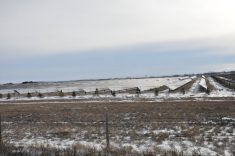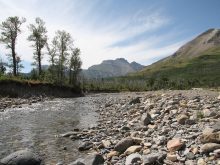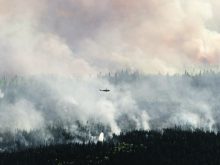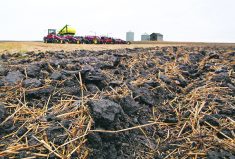I’m a whole-hearted believer in human-caused climate change and the desperate need to reduce our use of fossil fuels before the global temperature spirals out of control.
However, I used to get a little queasy every time some weather disaster struck and it was blamed on climate change.
Hurricanes in the Atlantic Ocean? Climate change.
Severe drought in Australia? Climate change.
Three feet of snow in Newfoundland? Has to be climate change.
It made sense to me that an excess amount of greenhouse gas emissions in the atmosphere was going to act like a lid on the planet and keep in heat that would normally vent off who know’s where.
Read Also

Farmer ownership cannot be seen as a guarantee for success
It’s a powerful movement when people band together to form co-ops and credit unions, but member ownership is no guarantee of success.
But could we really blame isolated weather events on climate change? Haven’t there always been hurricanes in the Atlantic Ocean, horrendous droughts in Australia and whopping snowfalls in Newfoundland?
There was a time when I thought environmentalists were doing a disservice to the cause when they talked like that.
But then this summer’s heat dome happened, bringing with it soul-crushing temperatures and devastating wildfires.
Again, there was talk that this was another sign of the climate emergency, and again I was starting to feel a little queasy.
But then scientists began announcing that they had looked at the data and concluded that it would have been “virtually impossible” for the heat dome to have materialized in the Pacific Northwest if it hadn’t been for climate change.
That got my attention.
It turns out the conclusion was being made by something called World Weather Attribution, an informal network of scientists who do rapid analyses of extreme weather events to determine whether they’re caused by climate change.
The group has done 40 of these so far, trying to distribute information as soon after the event as possible before the public’s mind starts to wander.
That’s what World Weather Attribution did with this summer’s heat dome.
The group’s work has definitely changed how I think about climate change.
Instead of being an abstract, although still scary, concept, it can now be linked to specific disasters.
And that sure makes everything a lot more real.



![Protesters crowd a street carrying signs that read, "Global warming real. In other news, water is wet," and "Stop denying the [blue painted pic of the Earth] is dying."](https://static.producer.com/wp-content/uploads/2025/07/29145152/158171_web1_2019-10-18T222818Z_1221762151_RC14C26A65A0_RTRMADP_3_CLIMATE-CHANGE-THUNBERG-1200-220x165.jpg)











